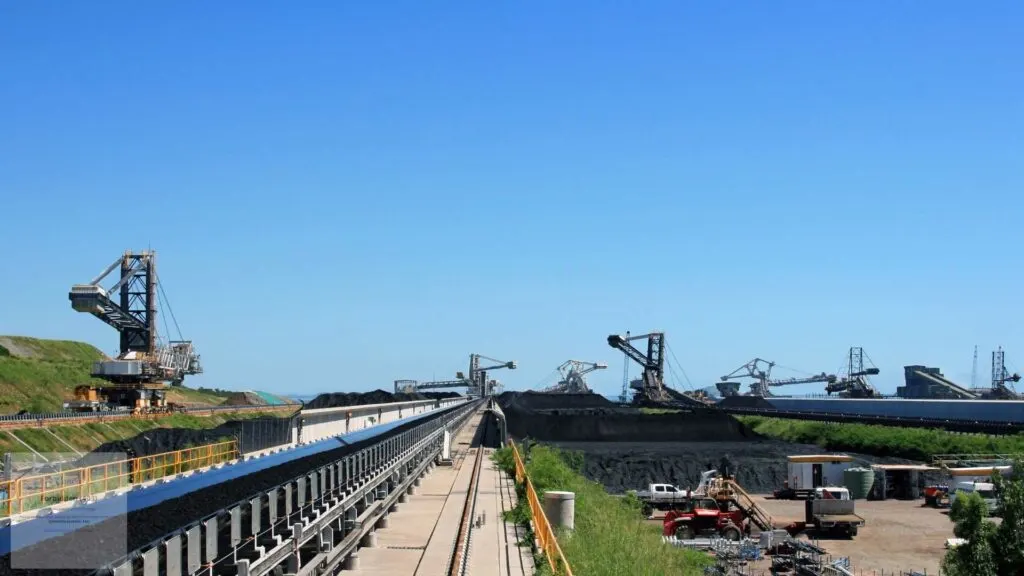The modern industrial world couldn’t function without conveyor belts, which efficiently transport things from one location to another and from one step of the manufacturing process to another. Because of their important function in modern company operations, they are commonplace in warehouses and production lines around the world.
However, what are the precise capabilities of these mechanical wonders? With its versatility and ability to streamline assembly lines and perform precise package sorting, conveyor belts are a great tool for increasing production and decreasing labor-intensive jobs.

This blog explores the dynamic uses of conveyor belts to learn how organizations are improving their operations. Understanding the capabilities of conveyor belts is the key to unlocking new levels of efficiency, whether you’re in retail, manufacturing, or any area that could benefit from efficient material handling.
Various Conveyor Belt Types
Conveyor belts are used in many different fields and can greatly improve the efficiency of a company’s operations. For instance, when utilizing a powered roller conveyor, they are capable of transporting loads ranging from 8000 kg in weight to incredibly small, lightweight products. A conveyor system comes in various types, each with its own set of advantages and disadvantages, and their uses and applications can vary greatly across various sectors.
Given the variety of models available, it should come as no surprise that conveyors are employed in every industry. By adding or removing nonstandard components, each of these conveyor systems can be tailored to a specific task.
Now that we’ve covered the many applications of conveyors in organizations, let’s take a look at some of the current facts and projections regarding conveyors in the industry.
Prospects & Stats For Conveyor Belts Now Utilized In The Industry
By 2025, the conveyor belt market is projected to reach a value of £3.9 billion.
Forecasts indicate that the polymer conveyor belt industry will expand at a CAGR of 3.5% between 2018 and 2025.
By 2025, the conveyor system market is projected to be worth £7.8 billion.
E-commerce and 3PL will account for 31% of the growth in the conveyor market.
The predicted 4.5% growth rate from 2019 to 2025 is in the food and beverage industry, driven by the increasing demand for packaged meals.
Clicking on any of the links will take you to more in-depth explanations of these current statistics and future predictions. Nonetheless, I’m crossing my fingers that the conveyor market will soon begin to show indications of slowing down.
With that out of the way, let’s examine five distinct applications of conveyors to provide some context for the current expansion in the market.
1. Belt Conveyors for Production Lines
Conveyor systems have been around for more than a century and are an essential aspect of production lines; Henry Ford’s T Model assembly line included one of the first.
Some examples of manufacturing lines that make use of conveyor systems are those that make automobiles, electrical goods, and baked foods.
Transporting goods from one location to another is the primary function of a conveyor in this setting.
So, some steps are involved in assembling a car to serve its purpose and satisfy the buyer. Conveyors work by constantly moving products from one part to another, which shortens the time it takes to complete a product.
2. Bag Handling Conveyors
If you’ve ever wanted to know how a distribution center handles packages, a conveyor system is probably an integral part of the delivery procedure.
The conveyor system is designed to speed up the process compared to manual work. It can hold and move objects of different sizes and weights to the appropriate department.

Depending on the size of the parcel, several parts of a large parcel delivery company may use different conveyors to move the things to their respective destinations.
Parts of the process for sorting returned packages might make use of powered roller conveyors, while parts of the process for loading lorries could employ inclined belt conveyors.
3. Conveyors for heavy material
The safety of the conveyor and its ability to support the weight of large objects are of the utmost importance when transporting these items.
A heavy-duty conveyor, which can take many forms depending on the cargo, is necessary for this transportation. Because of this, larger objects can be processed without risking damage to the material or conveyor caused by sharp, heavy, or gritty objects.
Heavy-duty conveyors are engineered for a variety of uses, from transporting massive quantities of coal to withstanding chemical degradation.
4. Conveyors for the Production Lines of Food and Beverages
Conveyors can be set up so that they swiftly transport foods and drinks from the point of production to the subsequent steps, such as cooling or distilling, and finally to the packaging stage, which is essential for the rapid packaging of these goods on assembly lines.
Utilizing conveyors in food and drink packaging has the additional advantage of facilitating the sanitary packing of all items. So, conveyors not only boost packaging line output, which benefits the consumer, but they also guarantee that the food and drink are up to code in terms of cleanliness.
5. Conveyors for a Process Plant That Elevate Outputs
Among the many applications of conveyors is the vertical movement of goods from one department to another, as previously said, to the consumer. Several approaches can do this, from a minor angle to a steep one.
Here, we see a powered belt conveyor set up at a small angle, making it easy to transport packages from one step of a process to the next in the logistics industry.
In the end!
As we’ve explored various conveyor types and their applications, it’s clear that conveyor usage can greatly vary to meet the specific needs of different clients and industries. While this blog post covers several key uses, there are many other applications of conveyors that you can find in the market being offered by various other companies.
If you’re searching for a tailored conveyor and automation solution and haven’t found what you’re looking for in this article, please don’t hesitate to contact a company that deals in them.

Jessi is the creative mind behind The Coffee Mom, a popular blog that combines parenting advice, travel tips, and a love for all things Disney. As a trusted Disney influencer and passionate storyteller, Jessi’s authentic insights and relatable content resonate with readers worldwide.
